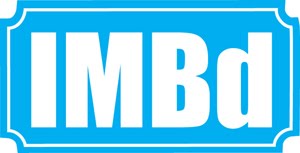***1/2 out of ****
Dawn of the Planet of the Apes is a very good sequel and one
of the best action movies of the summer. It is also a big step for director
Matt Reeves, whose film Cloverfield was undervalued as was his
beautifully-made, yet needless remake of Let the Right One In.
It is arguable that this reboot of the Apes franchise is
also needless, and part of a new movement in mainstream cinema to only make
sequels, remakes or anything with a trusted brand-name on it. An over-reliance
on CGI spectacle is also an ongoing issue in the movies today. One may
criticize all of these things, but I absolutely refuse to do so where they are
done so well.
2011's Rise of the Planet of the Apes, won me over before it
was even released. As soon as I found out that the reboot was completely
avoiding the lost astronaut story of the original film and was to take place in
a modern-day setting with an ape named Caesar as its lead, I had total
admiration for where the film's makers were getting their inspiration. In the
original five-part movie series, Caesar was not introduced until the very end
of the third film and became the main character of the last two films. All the
sequels in the original run of films were interesting, yet cheap. I strongly
believe that remakes are most valuable when they are of films that had great
ideas but could have been better.
The opening pre-title sequence is a haunting montage while
calling back to the last film’s end credits -which showed the virus spreading
all over the earth. This is a good way of providing exposition to those who are
new to the franchise while informing everyone that after ten years of the
virus, the planet is a dead-silent blackout.
Following the film’s title is a beautiful close-up shot of
Caesar’s eyes. As the camera slowly pulls back, we see he is wearing war paint
and is surrounded by dozens of other apes in Redwood trees. What follows is a
great elk hunt, which disappointingly, contains the film’s least-convincing
CGI. This possible homage to the Last of the Mohicans opening has the right
energy but critics of CGI indulgence will have to wait for the next scene when hunting party returns to the ape village where their
new culture is thriving as they communicate via sign language. The animation
and hard work that went into this aspect of the film is testament to movies as magic
shows where meticulous coordination of technological artistry can create the
most astounding illusions.
Dawn is loosely based on Battle for the Planet of the Apes
in the same way Rise was loosely based on Conquest. A virus has killed most humans and dramatically enhanced ape intelligence. A group of human
survivors looking to reactivate San Francisco's power from a dam in the woods,
encounter the Apes and both groups are disturbed by the other's existence.
Some people ignorantly blame the apes for the spread of the
virus, which killed their loved ones. All apes, with exception of their leader,
Caesar (Andy Serkis), have no fond memories of humans. However, the fear of war
drives Malcolm (Jason Clarke) to begin a diplomatic strategy with the apes to
gain their trust and be allowed access to the dam. Dreyfus (Gary Oldman), the
leader of the human colony, lacks faith that this will work but gives Malcolm a
few days while readying his large artillery supply.
Meanwhile, the hopeful Caesar and the former lab ape, Koba
(Toby Kebbell), whose hatred of humanity knows no bounds, butt heads. The story
slowly develops into a bittersweet tale of trust and friendship built between
two separate leaders, whose good intentions cannot control the inevitability of
dreadful ugly conflict between their peoples.
Like the last one, the plot holds a lot of the film’s
strength but every other aspect to the screenplay by Amanda Silver, Rick Jaffa
and Mark Bomback is simply acceptable. Director Matt Reeves, like his former collaborator, J.J. Abrams knows how to elevate simple material to grand heights through rich
atmosphere and excellent pacing. The gloomy overcast look of the movie is
matched by the dread you feel for its characters, who have too much tragedy in
their past to afford any more. The score by Michael Giacchino is also a lively contribution and very
in touch with the emotional direction the series is taking.
It may be a drawback for some that this is another dark and
serious summer movie, following the long string of Dark Knight –inspired, movies of humorless realism applied to fantasy concepts. As an Apes movie, I would not
ask it to be anything else. Cynicism is welcome here.




